
There are those of us in life who are blessed with a brain that can systematically process and allocate time for whatever the daily grind throws at us. And there are those of us who really, really can't.
I'm proud to say I sit somewhere in between the two camps. I'd like to think of myself as fairly organised: I have lists and reminders coming out of my ears (albeit in different notebooks) but I'm still not as efficient as I could be.
When I heard about bullet journaling, I did wonder whether it was just another one of those internet trends people love for all of five seconds, that disappear as fast as they show. But when I tried it, I realised that it's got staying power. And I know that because when I gave it a go, something inside me changed. In a relatively short space of time, I became a solid 9/10 at being organised. And that's NEVER happened.
For the uninitiated, a bullet journal is a to-do list, daily planner, monthly calendar and goals storer all in one nifty little book. The idea is that you create the pages as you like, so you can get your coloured biros out and have a bit of fun in the process. Or, if you're like me, you can try and make it look neat but realistically it comes out looking like a dog's dinner.
While my bullet journal is not necessarily the prettiest, it has helped me get my shit together in 2017 once and for all.
This year I had grand plans to kickstart my personal blog again, achieve some terrifying life goals like buying a property, and book a fun holiday to somewhere far flung. (There are also lots of other goals but I'm not going to sit and list them here as we'd be here all day.) Keeping all of this information in my head, however, was beyond overwhelming and I knew that come February, it would all be either forgotten or pushed to the TBC pile in the back of my mind.
When I created my bullet journal, however, things started to happen. For starters, I kickstarted my blog and boshed out three blog posts in the space of a week. Next, I managed to get on top of emails that I'd been meaning to send for, like, ever. I have also since written down my goals for the year ahead, which will hopefully help me to push harder for them, and have planned out the big monthly occasions that are happening (like my step sister's wedding in Tenerife - and all of the stuff I need to do for it like booking flights, hotels, getting outfits, presents, etc).
I've also *shock horror* kickstarted the house-buying process. Who even am I?
For those who are reading this with big glassy eyes thinking, 'how can I transform into an organised goddess too?', I have detailed a step-by-step guide of how to create your journal below.
You will need: an empty journal, some coloured pens, a ruler.
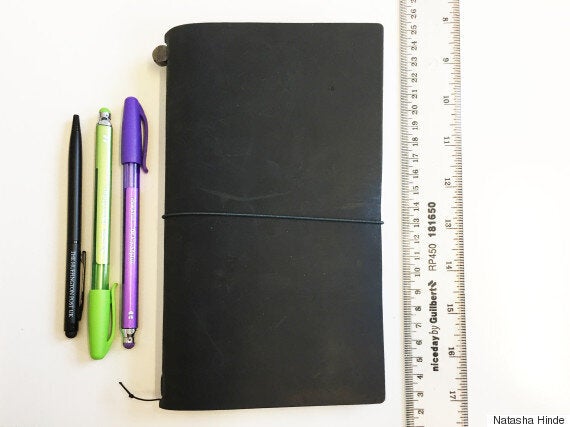
Number all of the pages in your journal. This will be useful when you come to create your contents page. Pop each number in the bottom page corners, like a book.
On the very first page, write 'Contents' or 'Index'. You'll be coming back to this later.
On the second page, write 'Key'. Throughout your journal, you will use a system called 'rapid logging', which basically allocates certain actions / categories to your notes.
- Tasks are represented by a dot "•"
- Once a task is complete, you stick an "X" over the dot
- If the task is migrated (moved on to another day) you use ">"
- And if the task is scheduled then you use "
- Events, such as birthdays or dates, are marked with an "o"
- And notes, for example a feature idea or thought you have, are flagged using "-"
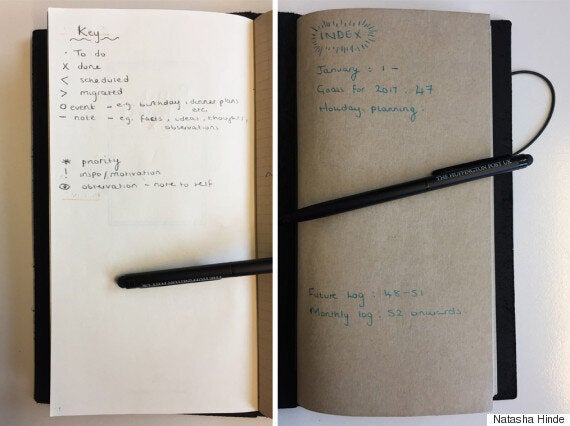
Go to the back of your book and count 12 pages. These pages will act as your 'Monthly Log', with each page representing a month. Mark the month name at the top of each page (so December should be your last page). This section of the journal is where you can look at the month ahead and see things like birthdays, holidays, events taking place on certain days, etc.
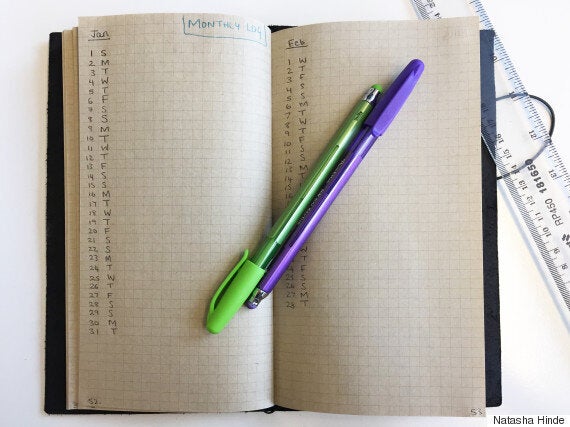
In some cases, people have two pages allocated to each month, so they can have a page dedicated to the days listed in calendar format, and then a task page on the right. I've stuck to one page per month, which is basically used as a calendar page. The daily tasks I tend to stick in the front of the journal (which I'll come to later!).
On each page, list the dates of that month down the left hand side, followed by the first letter of the corresponding day. So Sunday 1 January would be "1S". See above if you're currently befuddled.
I'm hoping that this section of my bullet journal will make me better at menial tasks such as sending birthday cards on time. I've had my first success story already, so it's looking promising.
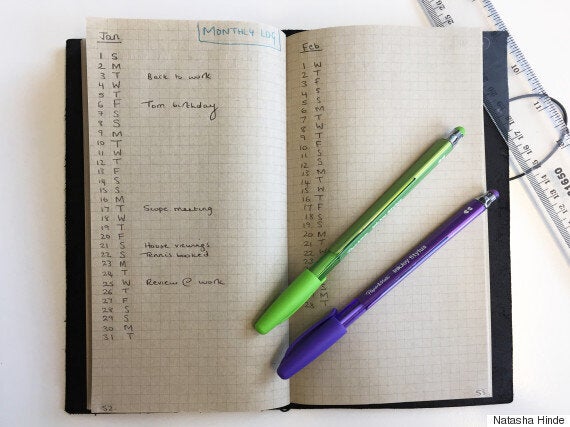
Just before the 'Monthly Log', allocate two double page spreads to your 'Future Log'. This is where you can slot in monthly plans, so you can see what big occasions are coming up at a glance - like holidays, anniversaries, weddings, hen dos, etc.
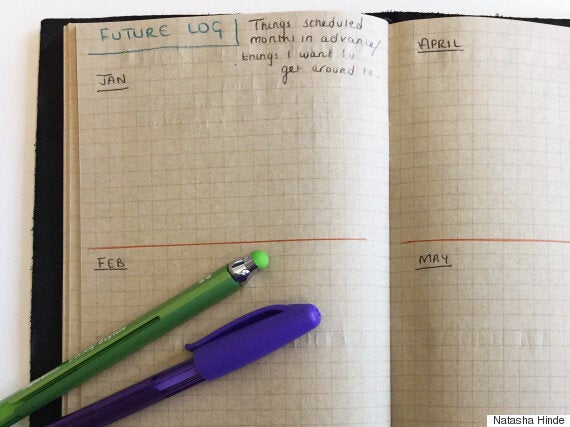
Create your daily log at the front of your journal. For this, simply write the date and start writing what you need to do for the day ahead. This part of the journal is where you need to utilise your special key. See below for examples - as you can see, I'm a fan of tasks and events and need to get better at migrating stuff.

A word of warning, don't set up daily logs ahead of time, as you might not end up filling in a random day and then you've wasted space (I did this on my first page and it made it look SO messy). Simply create your daily logs as you go along (or the day before).
Fill in your contents page so that you know which pages to head to for your daily log, goals planner, monthly and future logs, and any other random pages you've decided to pop in. For example, you could dedicate a page to expenses or budgeting.
Get cracking! Fill in everything you need to do - from booking that smear test to scheduling in meetings.
Once you've been bullet journaling for a few months, make use of the migration icon (>) by going through all of your previous entries and migrating any tasks that haven't been ticked off forward.
As the official Bullet Journal website says: "It may seem like a lot of effort to have to rewrite items over and over, but that's intentional. This process makes you pause and consider each item. If an entry isn't even worth the effort to rewrite it, then it's probably not that important. Get rid of it.
"The purpose of migration is to distill the things that are truly worth the effort, to become aware of our own patterns and habits, and to separate the signal from the noise."
Now go forth and be organised!